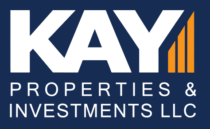By Dwight Kay
There are a number of potential benefits of exchanging into a Delaware Statutory Trust (DST) 1031 property. It is important to note that these should be carefully weighed with the potential risks that we have outlined at the end of this article. You should also read the risk section of each DST 1031 property’s offering materials in detail prior to investing.
Eliminating the day-to-day headaches of property management
Many of our clients are at or near retirement, and they are tired of the hassles that real estate ownership and management often bring. They are tired of the tenants, toilets and trash and are wanting to move away from actively managing properties. The DST 1031 property provides a passive ownership structure, allowing them to enjoy retirement, grand kids, travel and leisure, as well as to focus on other things that they are more passionate about instead of property management headaches.
Tax deferral using the 1031 exchange
Many of our clients have wanted to sell their apartments, rentals and commercial properties for years but haven’t been able to find a property to exchange into and just can’t stomach the tax bill after adding up federal capital gains tax, state capital gains tax, depreciation recapture tax and the Medicare surtax. The DST 1031 property solution provides investors an ability to move from an active to a passive role of real estate ownership on a tax-deferred basis.
Increased cash flow potential
Many investors are receiving a lower amount of cash flow on their current properties than they could be, due to their properties having under-market rents, properties that have multiple vacancies and/or that are raw or vacant land sitting idle. DST 1031 exchange properties provide an opportunity for investors to potentially increase their cash flow on their real estate holdings via a tax deferred 1031 exchange.
Portfolio diversification by geography and property types
Often times, 1031 investors are selling a property that comprises a substantial amount of their net worth. They want to reduce their potential risk and instead of buying one property (such as another apartment building) or one NNN building (such as a Walgreens pharmacy or Taco Bell restaurant) they decide that investing into a diversified portfolio of DST 1031 properties with multiple locations, asset classes (property types) and tenants is a better fit for their goals and objectives.
However, it is important to note that there are no assurances that diversification will produce profits or guarantee against loss.
Long-term non-recourse financing locked and in place to satisfy debt replacement requirements of the 1031 exchange
One of the requirements for a 1031 exchange is to take on “equal or greater debt” in the replacement property to what you had in the relinquished property (the property you are selling). In today’s lending environment, it is often hard for investors to obtain non-recourse financing at an acceptable interest rate and terms. Due to the DST 1031 properties’ sponsors typically having strong lending relationships, they are able to secure non-recourse financing at some of the best terms available in the marketplace. The DST 1031 investors are the direct recipient of these financing terms that they would otherwise often not be able to obtain on their own.
Access to Institutional Grade Real Estate
DST 1031 properties provide access to large, institutional-grade real estate that is often otherwise outside of an individual investor’s price point. With the typical minimum investment of $100,000, investors are still able to purchase an ownership interest in large $20 million-plus apartment communities, $5 million-plus pharmacies or $15 million grocery stores, for example. This allows investors access to a level of real estate that they just would not have been able to exchange into before.
That being said, we also have had many clients with very large 1031 exchanges opt to invest in DST 1031 properties because they did not want to place “all their eggs into one basket” by purchasing one single, large investment property.
Unlocking trapped equity
For those investors that have a substantial amount of equity in raw or unimproved land (as well as investors with vacant properties that are not producing any cash flow), the DST 1031 property allows them the opportunity to sell, defer taxes via a 1031 exchange and unlock the trapped equity that they have in their properties. Now this trapped equity is free to produce for the investor potential cash flow on a monthly basis.
Ability to typically close on a DST 1031 property typically within three to five business days of completing and returning subscription documents
This is one of the main reasons why investors in their 45-day identification period “time crunch” often turn to DST properties. They are able to close quickly and complete their exchanges due to the properties being prepackaged, as opposed to waiting 30, 60 or 90 days to purchase another outside property.
All real estate contains risk. Please read the full private placement memorandum for a discussion of each property’s business plan and risk factors. There are no guarantees for projected cash ow and/or appreciation. Please do not invest in real estate offerings if you cannot afford to lose your entire investment principal.

